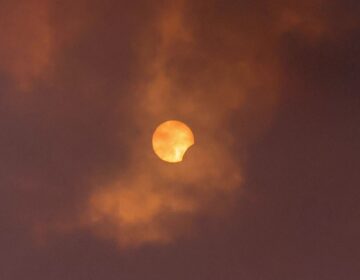Philadelphia Science Festival
Listen 04:43
Image: TFIPR
The Philadelphia Science Festival encompasses nine days of more than 80 extraordinary, mostly free science events all around the city from the star party to the Carnival on May 4th on the Parkway. Sample informal and diverse science hands-on activities, lectures, debates and workshops. More information at fi.edu/psf.
Saturn’s moon Titan is more like Earth than previously thought. It’s small, it’s cold and it’s far, far away, but it has lakes of liquid methane and ethane(hydrocarbons) cold enough to be liquids rather than gases as they are here on Earth. Observations indicate some were so shallow that they evaporated during the transition from winter to spring on Titan and some may be 100 meters deep.
It looks like the moon’s subsoil has water-ice crystals bound into it, below the top eight inches.
Meteor impacts kick up water molecules that can be detected by lunar orbiting satellites.
It’s not a lot of water, but scientists have been aware of some amount of water in the soil for some time.
Turning to night sky highlights this week:
The moon is visible in the pre-dawn sky with Jupiter, Saturn in the south and the last views of Venus low in the east.
The next lunar cycle starts with New Moon next Saturday, May 4th.
WHYY is your source for fact-based, in-depth journalism and information. As a nonprofit organization, we rely on financial support from readers like you. Please give today.




